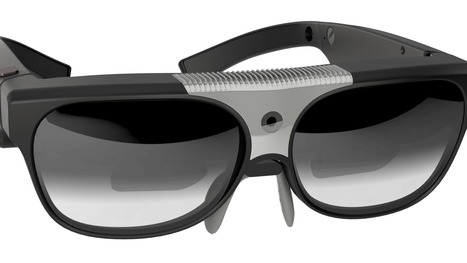For the First time we take our camera rig outside and shoot what our optics can do in daytime conditions. No tricks or post effects were used in this video and it was shot with a iPhone 6.
Apple is integrating augmented reality technology into the iPhone’s camera app, a person familiar with the matter told Business Insider. The effort, which involves teams from several acquired startups, reflects Apple’s near-term desire to put augmented reality technology into consumers' hands even as it develops special glasses that could eventually change the way people perceive their surroundings.
Apple also recently hired an expert in head-mounted displays, in the latest sign of its longer-term glasses initiative. Augmented reality is an exploding field in technology in which digital objects are superimposed onto the real world. A view of a city street for instance can be enriched with a map for directions, a coupon for a nearby store or an animated character in a video game.
The ultimate goal is a pair of smart glasses, and companies including Google, Microsoft, Facebook, Apple and Snapchat are all actively developing or exploring such a product. But in the near-term most popular augmented reality applications will take place on a smartphone, as was the case with this summer’s smash hit Pokemon Go app. Point and recognize By adding AR technology into the iPhone’s camera software, Apple wants consumers to be able to point the phone at a real-world object and have it be recognized, according to the person familiar with the matter.
That would require creating or licensing a database of 3D objects. Another early feature for Apple's AR integration into the camera app could be to recognize and manipulate people's faces. Apple integrated facial recognition technology into the photos app in the most recent version of its iOS software, and purchased FaceShift, a company with similar technology in 2015. Apple has acquired several AR and virtual reality technology companies in recent years including Metaio, in February 2014 and Flyby Media in January 2016.
The employees from both groups are now working in Apple’s camera group. Eventually, the person said, after the AR features are built into the iPhone camera app, Apple will release the technology behind them as an SDK for app developers, like it did with its Touch ID fingerprint sensor. At that point, Apple will become a competitor to companies like Vuforia and Blippar. Apple declined to comment. Several leaders in the augmented reality space have previously said they expect Apple to integrate AR into the next version of iOS.
Apple is also working on a pair of skinny, stylish smart glasses that pairs to an iPhone to display contextual information, Bloomberg reported on Monday and sources have told Business Insider. However, the timeline for the device is far into the future — 2018 or later, according to the Bloomberg report.
But there are some signs that the project has moved out of the exploration labs and into a more advanced stage in which Apple is exploring production. John Border, who lists his title as "senior optics manufacturing exploration engineer," joined Apple in September, according to his LinkedIn profile. Border's bio describes him as a "subject matter expert in the fields of head-worn displays, plastic optics manufacturing, camera systems and image sensors."
Before joining Apple, he was chief engineer at Osterhout Design Group, a small 50-person company based in San Francisco. ODG is notable as one of the few companies currently demoing a fully functional pair of smart glasses. ODG sells a device called the R-7 Smartglasses that uses "3D stereoscopic ultra-transparent see-thru HD displays" to superimpose computer graphics into the real world.



 Your new post is loading...
Your new post is loading...







